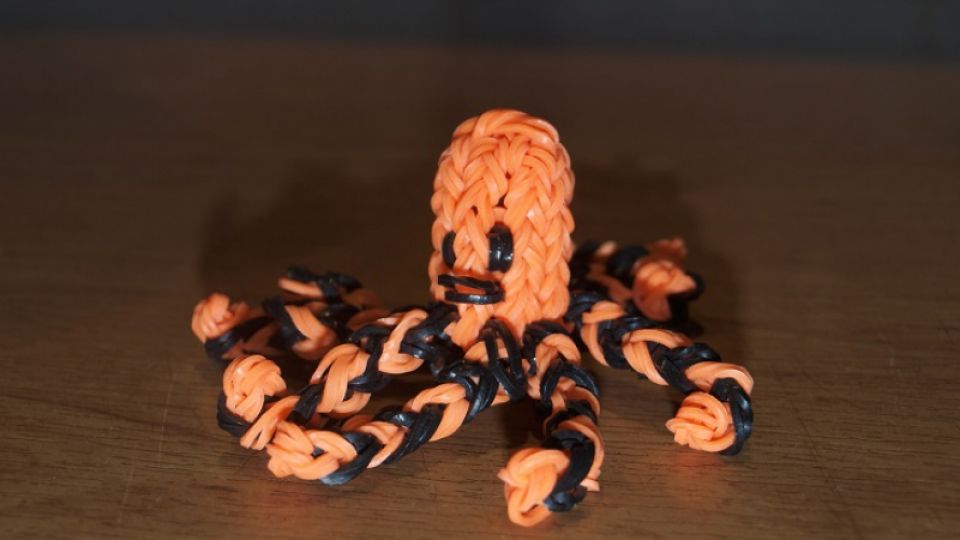In the last few days, Arnika has bought further sets of bands and pendants and other accessories, and it will send them for testing into a specialised laboratory this week. The test results will be published within ca three weeks on Arnika's web pages (carrying out the analyses takes approximately 2 weeks).
Such analyses may be carried out by laboratories specialised in testing chemical properties of plastics. Arnika shall commission carrying out of the tests, for example, in the laboratories ITC Zlín, and in laboratories of the Institute of Chemical Technology in Prague. Preparation of the tests is relatively time-consuming, and the tests are not very cheap, due to utilization of advanced equipment, and necessity to buy standards for comparison of analysis results. Costs of a test for content of 7 phthalates are in the order of several thousand CZK per analysis, and, in some cases, several analysis of one product have to be carried out. Should the tests reveal that some sets of bands and their accessories have high contents of toxic substances, we will inform the Czech Trade Inspection Authority in order that it examine the products, and, possibly, withdraw them from the market. In the Czech Republic, no phthalates were detected yet in the loom bands, however, they were found by a United Kingdom laboratory in pendants sold together with the bands.
„We have been also contacted by certain internet shops, which now cooperate with us in commissioning analyses of products they sale. They have certificates on majority of them from their countries of origin, however, they want to be completely sure. We very welcome and appreciate their activity," noted the testing coordinator, Mgr. Karolína Brabcová.
In the meantime, Arnika has received high number of enquiries from parents, as well as sellers, whether we may test their loom bands for presence of toxic substances, or, optionally, phthalates.
Arnika may carry out preliminary tests using a roentgen spectrometer However, it is able to quantify only the contents of heavy metals and chlorine, and, thus, among other things, to determine whether the product is made of PVC (it is an abbreviation for polyvinylchloride – there may be found whether it contains chlorine). Unfortunately, the apparatus is not able to determine whether the bands contain phthalates. They are added into PVC as plasticizers, in relatively high amounts (10 - 25 %, sometimes even up to 50 %). However, the spectrometer is not able to determine the presence of phthalates, this can be made only in a specialised laboratory by a complicated and expensive analysis. None of the bands we bought until now was made of PVC. Another material that could contain phthalates is synthetic rubber. A list of products tested using the roentgen spectrometer, and further findings, are available on Arnika's web page: http://arnika.org/mereni-zatim-neodhalila-zadne-sady-gumicek-loom-bands-s-nadlimitnim-mnozstvim-tezkych-kovu-anebo-z-pvc. Arnika will carry out tests using the roentgen spectrometer in LASO department store in Ostrava on September 18. We may test bands that people bring to determine whether they are made of PVC and whether they contain some heavy metals. Further testing will be carried out this autumn in Prague. We will inform about the date of testing on our web pages and on facebook in advance.
How to avoid loom bands that could contain phthalates?
On the product label, look for identification of the material from which the bands are made. The least hazardous one is silicone. It is better to avoid PVC and synthetic rubber. The bands should also contain CE marking. It means that they are in accordance with the European legislation. Toys and products for children are subject to the European Directive 2009/48/EC that lays down the limit of 0.1 %, relative to the product weight, for the 6 most hazardous phthalates. Thus, if phthalates are found in loom bands and pendants or other decorative elements used with the bands, state authorities will be obliged to withdraw the relevant products from the market.
Testing of the loom bands was carried out within the framework of projects focusing on improvement of consumer knowledge on chemical substances in their environment, and has been financed by the European Commission Representation in the Czech Republic within the framework of the project „We Have the Right to Know", by the Ministry of Environment, and by the Metropolitan Authority of the Capital City of Prague.







